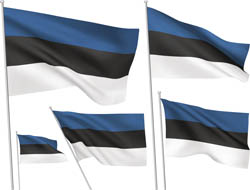Estonia extends space research programme
The Tartu Observatory in Estonia has an established record of excellence in space research covering 200 years of discovery. Recognising that enhanced effectiveness can be achieved through the alignment of its research strategy with that of the global community, scientists initiated the EU-funded project ESTSPACE. The project sought to build cooperative partnerships with the European Space Agency (ESA) and facilitate the participation of Estonian scientists in initiatives such as the Global Monitoring for Environment and Security (GMES) programme (now called Copernicus). ESTSPACE successfully developed a strategic research agenda for the Tartu Observatory for the period 2011 to 2015. Priorities are focused on astronomy, Earth Observation (EO) and space technology building on the Observatory's internationally recognised competence in remote sensing of the natural environment. Plans involve addressing fundamental open questions in astronomy, including the nature of the dark matter and dark energy that make up the majority of the Universe. Scientists will also be investigating formative events in the early years after the Big Bang and the motions of billions of stars and stellar populations. EO has benefited directly from the unique data made available from satellites. However, understanding the effects of solar variations on the space and terrestrial environment and human health is in its infancy. Tartu Observatory personnel plan to develop a preliminary version of a remote sensing-aided forest inventory system in Estonia. Work will also include the ecological classification of inland waters as well as application in the fields of terrestrial and aquatic ecology and the carbon cycle. Space technology has applications in remote sensing, weather forecasting, global navigation and communication. The Tartu Observatory is committed to the delivery of high added value downstream services in these fields. Among the technologies targeted are sophisticated optical instruments for EO measurements, small satellite technologies, and high-accuracy testing, verification and calibration services for space hardware and software. ESTSPACE activities have resulted in the achievement of all original project goals. Key collaborations have been formed with European and international networks, and funding has been extended through leadership roles in two new Seventh Framework Programme (FP7) projects and participation in two more. Finally, ESTSPACE has facilitated its participation in the European Commission–ESA joint GMES initiative.
Keywords
Remote sensing, space technology, Earth Observation, downstream services



